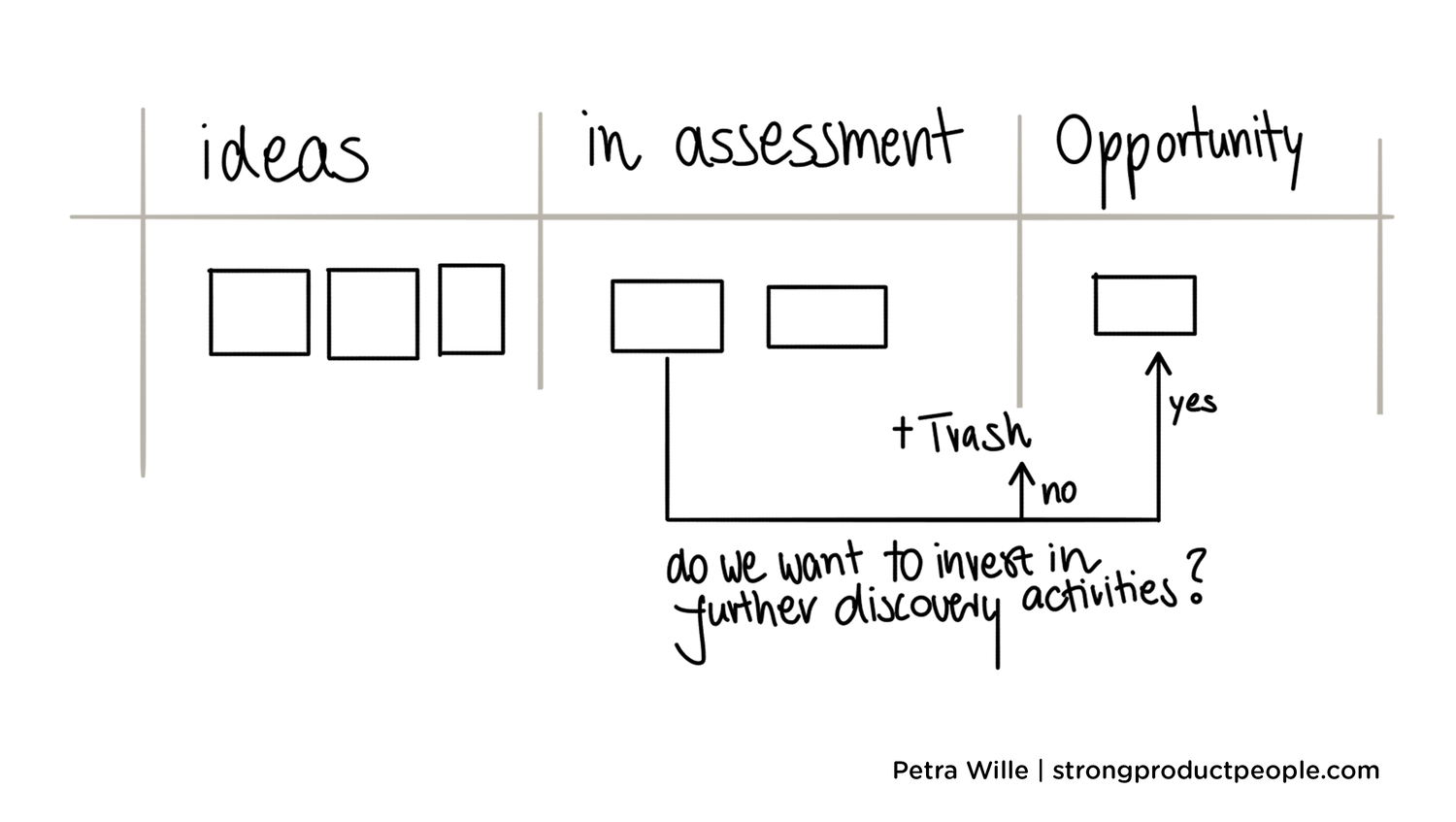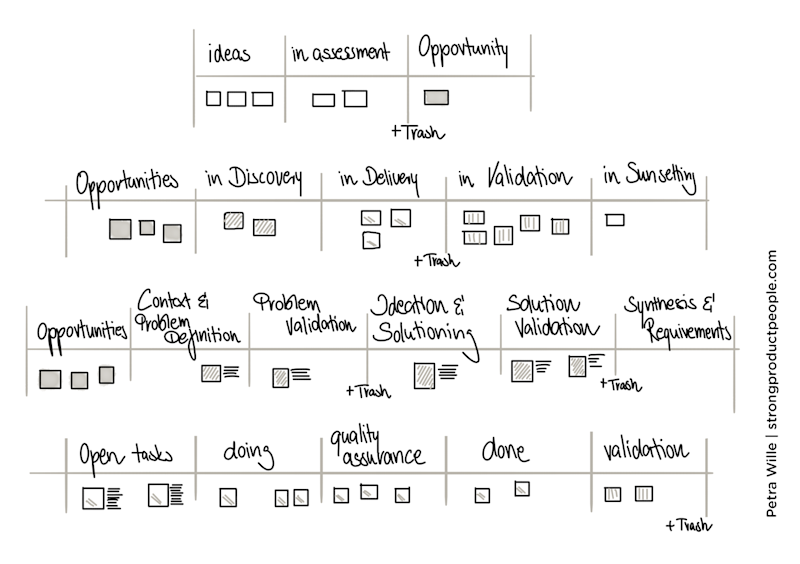Product portfolio excellence: Templates and best practices from Petra Wille

In product management, balancing incremental improvements with bold, innovative initiatives is something like an art. It’s a challenge that requires both strategic foresight and tactical agility. At airfocus’s latest Top PM Voices webinar, Petra Wille, renowned product leadership coach and author of Strong Product People, shared her proven methodologies for achieving product portfolio excellence. Here are the key insights from her talk, along with actionable advice and a closer look at how airfocus’s tools can help.
P.S. You can catch the full replay of the webinar here.
TL;DR: Key takeaways
Adopt a layered framework: Use delivery, discovery, portfolio, and idea-to-opportunity task boards to align team activities with strategic goals.
Prioritize transparency: Clear communication and visibility across teams and leadership build trust and alignment.
Balance comfort vs. bold projects: Allocate resources strategically between maintaining existing products (comfort zone) and exploring new opportunities (bold bets).
Use trash cans wisely: Regularly discard ideas that don’t align with strategy—but avoid the costly "golden trash can" of building and then killing projects.
Collaborate cross-functionally: Involve sales, marketing, and other teams in opportunity assessments for better alignment and prioritization.
Leverage tools for portfolio excellence: Tools like the airfocus Product Portfolio Template make it easier to implement a scalable framework.
Why product portfolio management matters
A well-managed product portfolio ensures that your team isn’t just focused on keeping the lights on but is also driving the organization toward future growth. As Petra explained:
We don’t want to have a situation where we only fell in love with ideas that contribute to comfort zone projects. It’s crucial to dedicate some capacity to bold bets.
Without a structured approach, it’s easy for teams to lose sight of strategic goals, misallocate resources, or neglect long-term innovation.
Petra’s framework for product portfolio excellence
Petra shared a layered approach to product portfolio management that she originally sketched on a napkin during a conversation with our CEO Malte Scholz. Here’s a breakdown of her methodology:
Delivery task boards
Most teams have mastered managing delivery work through agile practices like Scrum or Kanban. These boards track ongoing tasks and ensure smooth workflows within teams.
Discovery task boards
Fewer organizations have dedicated boards for discovery, where they validate ideas and opportunities. Petra emphasized:
Discovery boards help teams stay transparent about where they are in exploring new opportunities.
Portfolio task boards
This high-level view offers transparency into opportunities in discovery, delivery, validation, or sunsetting stages. It ensures alignment across teams and facilitates strategic decision-making.
Idea-to-opportunity boards
This board helps filter incoming ideas through the lens of product strategy and goals. Ideas not aligned with strategic objectives are discarded early, saving time and resources.
Not every idea should be built. Use trash cans liberally, but avoid the golden trash can at all costs!
The golden trash can refers to delivering something only to discover later it has no impact.

Key challenges in product portfolio management
Despite the elegance of Petra’s framework, implementing it may come with hurdles:
Leadership buy-in
Gaining leadership support for either comfort zone projects or bold bets is often a struggle.
Leadership buy-in can go both ways ... for some, it’s hard to secure buy-in for comfort projects; for others, it’s the bold bets that face resistance.
Collaboration with sales and marketing
Sales and marketing teams often have different priorities, which can create friction. Bringing them into the planning process and fostering transparency can alleviate this.
Balancing rocks, pebbles, and sand
Petra used the metaphor of rocks (large initiatives), pebbles (medium-sized projects), and sand (small tasks) to illustrate resource allocation.
If everything becomes sand, you’re not moving the needle on strategic goals. Conversely, too many rocks and your team burns out.
The role of tools in driving portfolio excellence
airfocus collaborated with Petra to develop a Product Portfolio Template that simplifies implementing her framework. The template connects delivery teams’ task boards to a high-level portfolio view, enabling real-time alignment and transparency across the organization.
The template allows product leaders to:
Monitor projects across teams with a unified portfolio roadmap.
Categorize initiatives by comfort level, strategic goal, and size (rocks, pebbles, sand).
Enable cross-functional collaboration on opportunity assessments.
This template is a game-changer for product teams looking to balance autonomy with alignment, Malte said.
Conclusion
Balancing comfort zone projects with bold new initiatives isn’t easy, but Petra Wille’s insights show it’s absolutely possible. With a clear focus on transparency, alignment with your goals, and the right tools like airfocus, you can set your team up for success. It’s all about finding that sweet spot between maintaining what works and taking calculated risks to drive innovation. You’ve got this 🙌.
Watch Petra's full webinar replay here.
Additional resources
What is a Product Portfolio Strategy and How to Develop It? - Andrea Saez
Maximizing Product Potential: A Guide To Building a Strong Product Portfolio - Kent McDonald
Portfolio vs Product Roadmaps: When and How To Use Them - Andrea Saez

Nouran El-Behairy

Read also

Build great roadmaps

Experience the new way of doing product management




